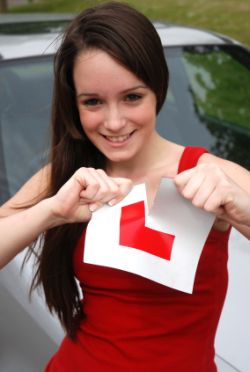Reversing Exercises in the driving test
There are three reversing exercises that you could be tested on in the driving practical test.
You will be asked to perform two out of these three so that the person undertaking your test (the examiner) can ascertain your ability in handling the car during reversing manouevres.
The three exercises that two will be chosen from are listed below:
- reverse parking
- turning in the road
- reversing around a corner
You will also learn how to do an emergency stop during your driving lessons; it is possible but not mandatory that you will be required to perform an emergency stop during your driving test.
As with your lessons, you will be told by the examiner what route you should follow, and in fact you should try to drive in the way that you were taught by your instructor: don't change your approach for the examiner, and don't be too anxious - if you make a mistake try not to let it affect you. You are allowed up to 15 faults (serious or dangerous faults automatically lead to failure).
This means that you could actually have no minor errors (driving faults) but have one major error (serious) and actually fail your test; this is because it is deemed the sort of mistake that means you have not performed at a safe level whereas minor faults need to be corrected but are not serious enough by themselves to mean that you are an unsafe driver.
Related Articles...
The photocard driving licence
The new type of driving licence is a photocard, and it has several features on it that it is worth understanding once you are issued with your photocard driving licence.
It contains your...
Staying calm in your driving test
There is no doubt that many people get extremely nervous before the driving practical test, and whilst this can be frustrating or disconcerting, it is not necessarily a bad thing. Many people...
How to pass the hazard perception test
First you need to understand just what a hazard is. Broadly, it is any element that can introduce risk into the driving scenario.
There are various different types of hazard that are...
What causes accidents: speed
There is a well known saying from safety campaigns which simply says that "speed kills".
Although many people think that you have to be travelling really quickly in order to make an impact...
Tips on driving in half light
Most drivers prefer driving in the day in good light in optimum road conditions, because these are the best conditions in which to see exactly what is going on in the road.
However there are...
What to do if horses are on the road
It may sound quite rare, but actually on country journeys you will from time to time encounter horses and their riders using the road. And you may also come across other animals too.
When you...
What a slippery road surface sign could mean
The problem with a slippery road surface sign is this: whilst you know what it means, you don't know what it means. If that sounds confusing, then the point is simply this - what is it that is...
Insurance for learner drivers
If you wish to learn to drive and you ever plan to use a private car then
you need to ensure the car you are going to use has the appropriate cover.
There are various levels of cover, the...
Practical Driving Test
There is an online booking system available for a practical driving test which you can access from the DirectGov website.
The web address to do this is: ...
Cost of a driving theory test
If you are learning to drive a car in the UK, then there is not just the practical test to think about.
You must also pass a theory test in order to be able to take the driving practical test...
Back to home page of driving theory test questions

